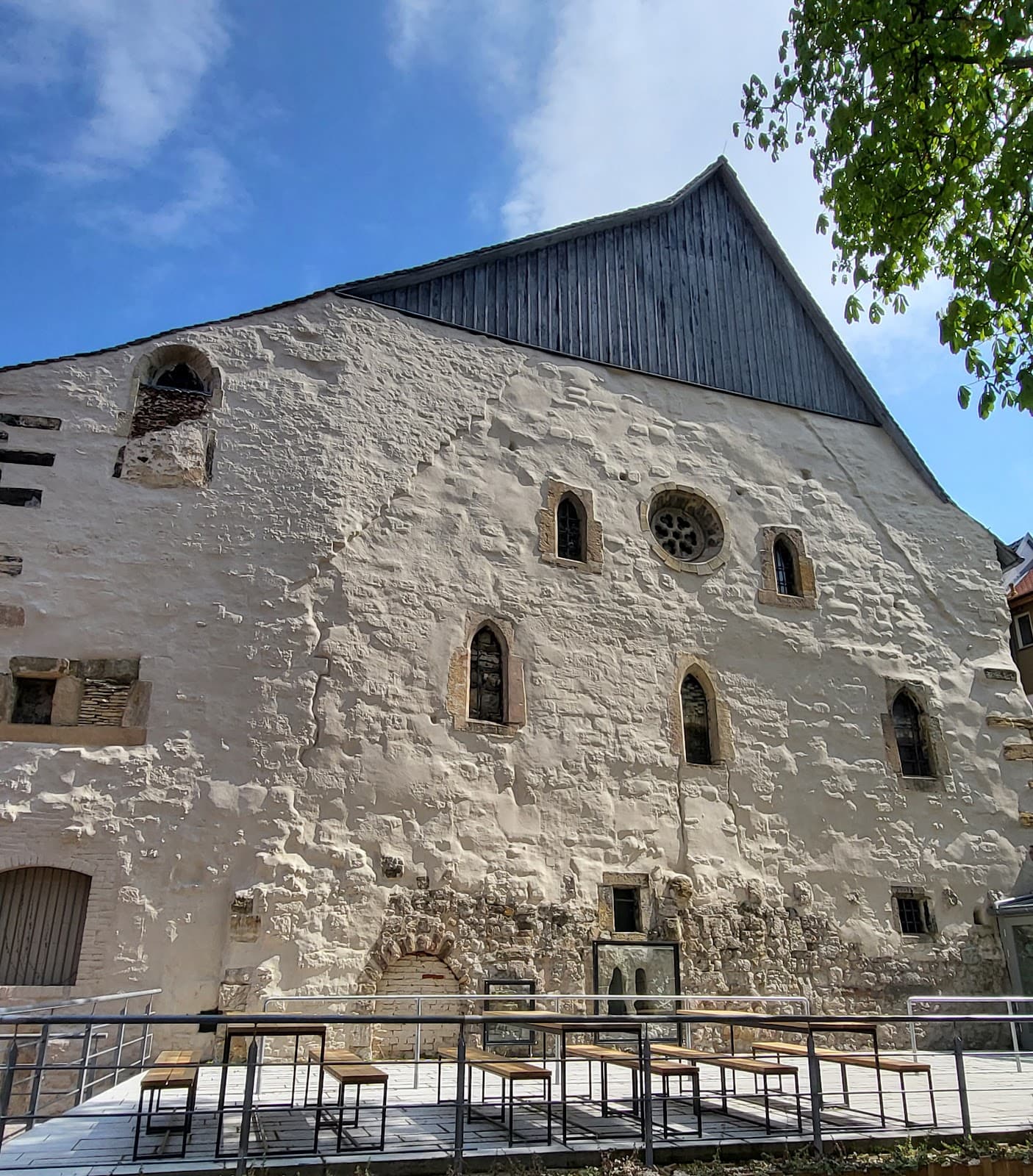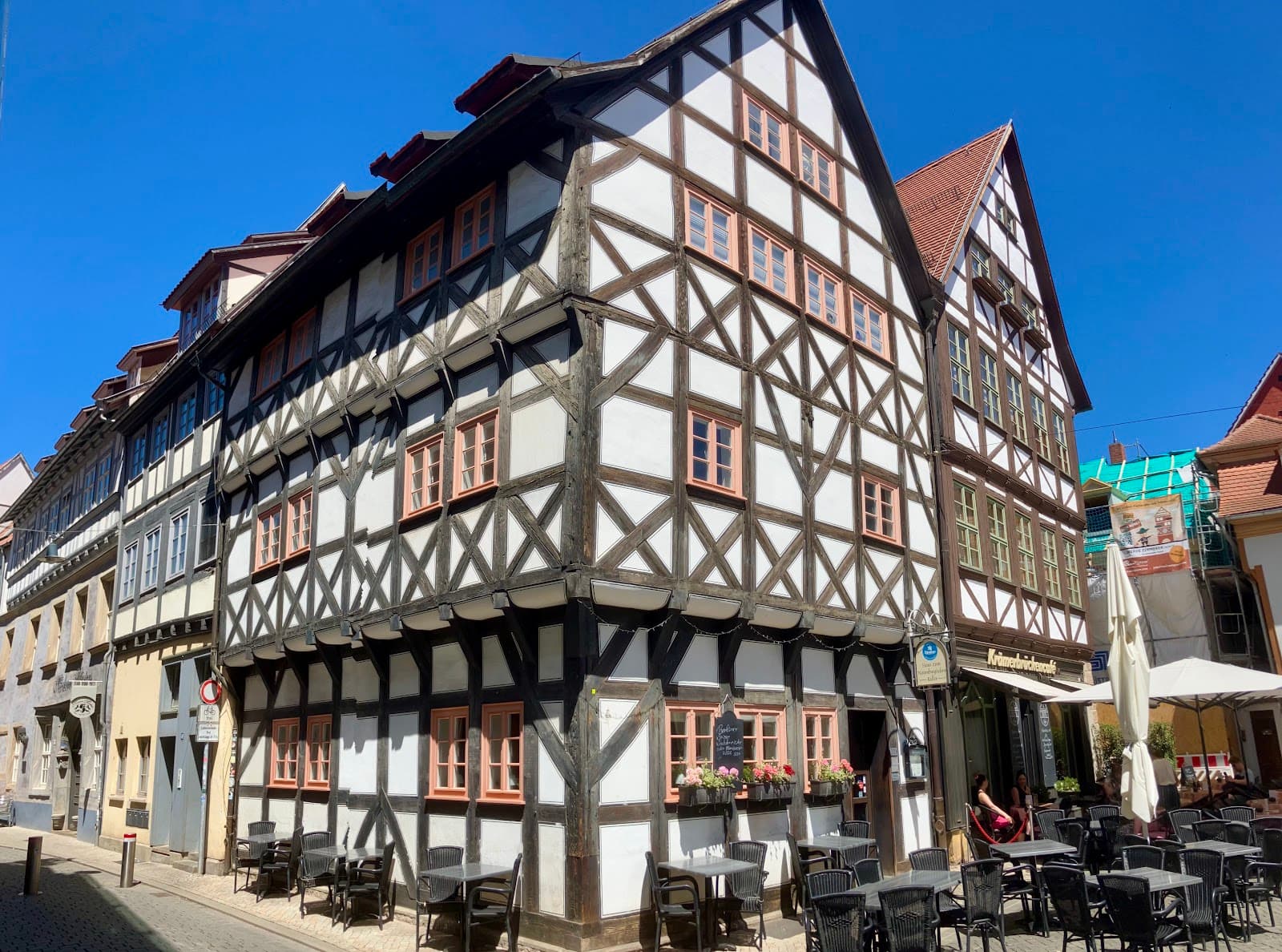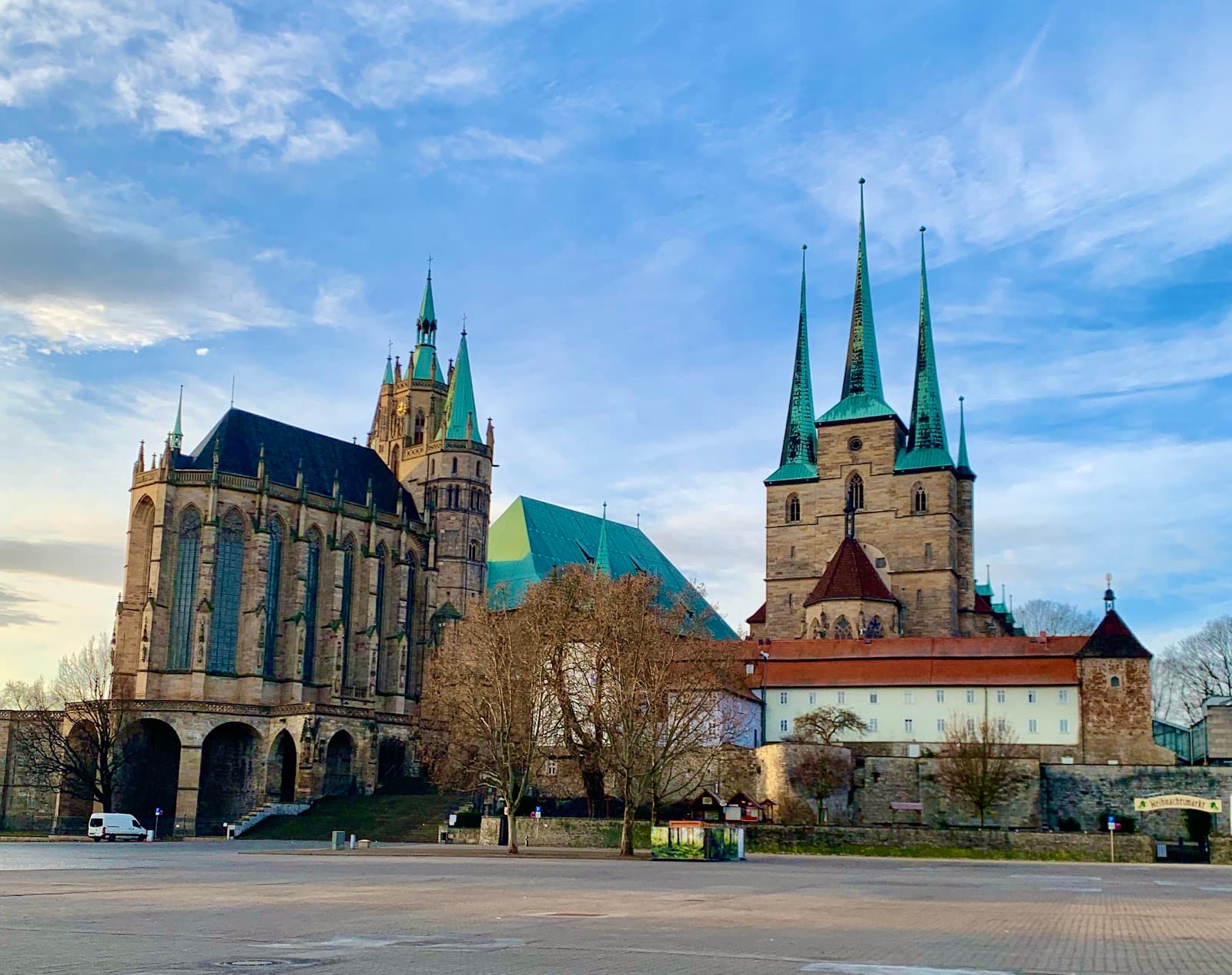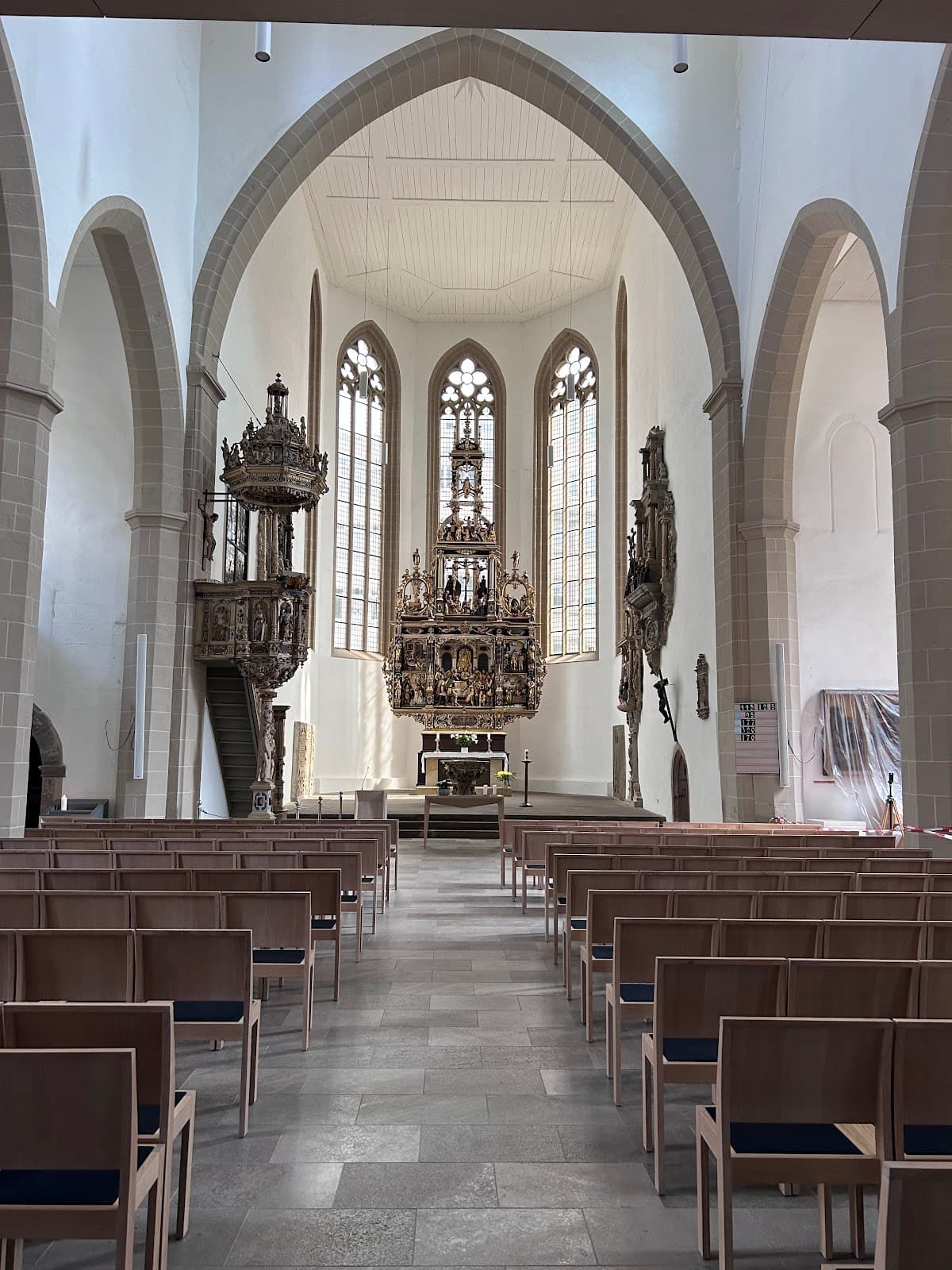
Museum of Thuringian Folklore
Discover 19th-century Thuringian village life, folklore, peasant art, and traditional costumes in this charming, artfully curated museum.

Highlights
Must-see attractions

Social
From TikTok & Reddit
Best Time
Fewer crowds, more peaceful exploration

Museum of Thuringian Folklore
Best Time
Fewer crowds, more peaceful exploration

Highlights
Must-see attractions
Discover 19th-century Thuringian village life, folklore, peasant art, and traditional costumes in this charming, artfully curated museum.
"Beautiful museum - a wealth of artefacts exhibited in artful ways."

Bring Your Translator App
Exhibits are primarily in German. Google Translate is your best friend here! :iphone:
Plan Your Route
It's a bit off the beaten track, so map your journey beforehand. :world_map:

Highlights
Discover the most iconic attractions and experiences

19th-Century Village Life
Step back in time and explore authentic recreations of rural Thuringian homes and daily life.

Folklore and Traditions
Discover fascinating local legends, customs, and the rich cultural heritage of the Thuringian region.

Peasant Artwork & Costumes
Admire intricate traditional costumes and vibrant folk art that tell stories of the past.
Plans like a pro.
Thinks like you
Planning Your Visit
Embrace the Local Charm
Language & Navigation
Best Times
Insider Tips
from TikTok, Instagram & Reddit
Bring Your Translator App
Exhibits are primarily in German. Google Translate is your best friend here! :iphone:
Plan Your Route
It's a bit off the beaten track, so map your journey beforehand. :world_map:
Engage with Staff
They are welcoming and happy to help, even with limited English. :wave:
Allow Ample Time
To truly appreciate the details, dedicate a good couple of hours. :clock1:
Tips
from all over the internet
Bring Your Translator App
Exhibits are primarily in German. Google Translate is your best friend here! :iphone:
Plan Your Route
It's a bit off the beaten track, so map your journey beforehand. :world_map:
Engage with Staff
They are welcoming and happy to help, even with limited English. :wave:
Allow Ample Time
To truly appreciate the details, dedicate a good couple of hours. :clock1:
What Travellers Say
Reviews Summary
Visitors praise the museum for its wealth of artifacts and artful displays that beautifully showcase 19th-century Thuringian village life and folklore. While the exhibits are primarily in German, the visual nature of the displays and the welcoming staff make it a worthwhile and enriching experience for those interested in local history and culture.
"Beautiful museum - a wealth of artefacts exhibited in artful ways. The staff didn't speak much English but were very welcoming and accommodating, they were just gorgeous."
S J
"Bit off beaten track. But worth it. Nice to see the old stuff being cared and kept for the future."
JE Hermes
"Great museum with some lovely artefacts from the area but gets two stars knocked off due to the member of staff who followed me throughout my entire trip, pretending to look at the exhibits the whole time. Completely unnecessary, plus I should have been keeping an eye on him as he managed to knock something over at one point."
John McNeill
What People Like
What People Dislike
Frequently Asked Questions
🚇 🗺️ Getting There
The museum is located a bit off the main tourist routes in Erfurt. Public transport options are available, but it's recommended to check local bus or tram schedules in advance. Some visitors find it convenient to use a taxi or rideshare service if they are not familiar with the area.
Information on dedicated parking for the museum is limited. If you are driving, look for public parking areas in the vicinity of Erfurt. It's advisable to check local parking regulations before arriving.
From Erfurt's city center, you can typically take a local bus or tram. The exact route will depend on your starting point. It's best to use a local transit app or ask at your accommodation for the most direct public transport options.
🎫 🎫 Tickets & Entry
Opening hours can vary, so it's always best to check the official museum website or contact them directly before your visit. Generally, museums in Germany operate during standard daytime hours, often closing by late afternoon.
Admission fees are typically modest for this type of regional museum. While specific prices aren't widely published online, expect an affordable entry fee. Checking their website or calling ahead is recommended for the most current pricing.
For smaller, regional museums like this, advance booking is usually not required. However, if you are visiting during peak tourist season or with a large group, it might be a good idea to inquire about group reservations.
Accessibility information can vary. It's recommended to contact the museum directly to inquire about specific facilities for visitors with mobility issues or other accessibility needs.
🎫 🧭 Onsite Experience
You'll find a rich collection of artifacts detailing 19th-century village life, including traditional costumes, peasant artwork, household items, and exhibits on local folklore and customs. It offers a fascinating glimpse into the region's past.
Unfortunately, most exhibits are in German. Visitors often use translation apps like Google Translate to understand the displays. Despite the language barrier, the visual elements are still very engaging.
To fully appreciate the exhibits and perhaps use a translation app, plan for at least 1.5 to 2 hours. Some visitors might spend longer if they are particularly interested in the historical details.
Photography policies can vary. It's best to look for signage within the museum or ask a staff member. Often, non-flash photography is permitted for personal use, but commercial photography may be restricted.
The museum offers a quiet and immersive experience, allowing you to step back in time. The displays are often artfully arranged, providing a sense of authenticity and historical depth.
🍽️ 🍽️ Food & Dining
The museum itself is unlikely to have a full-service restaurant. However, Erfurt has many local eateries, cafes, and bakeries. You can find traditional German food and snacks in the city center or surrounding neighborhoods.
Generally, it's best to consume food and drinks outside the exhibition areas to protect the artifacts. Check for designated areas if available, or enjoy your refreshments before or after your visit.
📸 📸 Photography
The museum offers unique photo opportunities with its detailed displays of traditional costumes, folk art, and recreated historical interiors. Capturing the intricate details of these exhibits can be very rewarding.
Flash photography is typically not allowed in museums as it can damage delicate artifacts over time. Always look for signs or ask staff if you are unsure about photography rules.
For Different Travelers
Tailored advice for your travel style
👨👩👧 Families with Kids
📚 History Buffs & Cultural Enthusiasts
🚶 Solo Travelers
Deep Dives
In-depth insights and expert knowledge
Exploring Thuringian Heritage
Many visitors find the museum to be a "wealth of artefacts exhibited in artful ways." The care taken in displaying these items allows for an immersive experience, where you can almost feel the history come alive. It’s a place that rewards a slower pace, encouraging contemplation of the lives and crafts of previous generations. The folklore aspect is particularly engaging, with displays that shed light on local legends and customs that shaped the community.
While the museum is a bit off the beaten track, its unique offerings make it a "well worth a visit" for those seeking an authentic cultural experience. It provides a valuable counterpoint to more mainstream tourist attractions, offering a deeper understanding of the region's soul. Remember to bring a translation app, as most information is in German, but the visual storytelling is powerful enough to transcend language barriers.
Navigating the Museum Experience
Some visitors have noted that a member of staff followed them throughout their visit, which can feel unnecessary. However, other reviews highlight the staff as "very welcoming and accommodating." It's advisable to approach the staff with a friendly demeanor and perhaps a smile, as they are generally eager to assist. The museum's location, being a bit "off beaten track," means you should plan your transportation in advance, whether by public transport or car, to ensure a smooth arrival.
Allowing ample time is key to enjoying this museum. While it might not be as vast as larger institutions, the depth of detail in the exhibits warrants a dedicated visit of at least 1.5 to 2 hours. This will give you enough time to absorb the information, take photos (if permitted, usually without flash), and truly immerse yourself in the 19th-century Thuringian village life depicted.






Social
from TikTok, Instagram & Reddit